Up to this point, details on Dean Evason’s Blue Jackets haven’t been plentiful. He, and Don Waddell, only just started the job and coaches and managers have little incentive to share behind the scenes details. For those reasons it makes sense but, if you’re like me, you’ll crave understanding of the upcoming season.
From the introductory press conference, which I sadly cannot cite directly because it has not been uploaded to YouTube but thanks to Kennedy Rehklau for offering excellent coverage I can still utilize, Evason, at the very least, brought his personality.
He’s passionate and has a sense of humor. As a leader, especially if you buy into a top-down approach, his infectious energy should flow through the club. From a first impressions perspective, he seems like a mix of Tortorella direct and Larsen love for his players.
That’s an excellent combination for a coaching personality and absolutely something to be excited about. If anything, he should be able to galvanize the room and get the team connected.
Side note, the commentary coming from Blue Jackets leadership has been beyond perplexing for me. It’s hard for me to imagine a locker room, filled with professional athletes, who are so far from accountable and who do not play for eachother. I don’t know if that suggests extremely poor leadership from coaching, as Kekelainen indicated was coming from Larsen, if the player-leadership isn’t connecting with the young players or whether they added too many players who don’t really care.
While I have plenty of thoughts about the club’s obsession with accountability and work ethic, the primary focus here will be on what we can learn about Dean Evason tactically. So far, we’ve got a few broad answers from his opening press conference.
“I believe that you have to have a structure, you have to have how you are going to to play the game as far as your systematic stuff, but then it needs to be tweaked by who the personnel is and how your team is built,” Evason said. “But you have to have a foundation and know how you are going to play.
“Our team will play with great detail and great structure, but will also give them the opportunity to be creative in the offensive zone and through the neutral zone. The game is made of mistakes. You have to build your system to allow the players to make those mistakes and still give them the chance to have success.”
In a radio interview with Rothman and Ice, he added some more stylistic qualities to his systemic intenions for the Blue Jackets.
Competing every single night, every single shift. We won’t get outworked.
We might get beat on some nights with a skillset or a bounce here and there but our hockey club won’t get outworked on any given night. We’ll play a high tempo and pressure driven game.
The Key Points:
Work Ethic
Structure
Creativity in Offensive and Neutral Zone
High Tempo Pressure
I am sure we’ll learn more closer to training camp but the biggest reasons to be excited about Dean Evason, up to this point, are all personality and passion.
Wild Systems and Structures
From here, I’ll take us through the Minnesota Wild’s tactical structure with Jack Han’s Hockey Tactics books from 2022 and 2023 (Evason was fired prior to the 2024 version) and supplement with some film of his team performing the above systems.
It’s been difficult to get quality film for a couple of reasons.
Firstly, ESPN did some shenanigans with deleting the VODs of the early 2023-2024 games.
Secondly, in late 2023 Kirill Kaprizov, a major tactical centerpiece of the Wild, was injured. He returned for the playoffs but the wild played games without Joel Eriksson-Ek and Ryan Hartman meaning his centers were Sam Steel or Freddy Gaudreau.
Thirdly, broadcast camera work. Much of the interesting tactics, at least in my opinion, come in how Minnesota utilized Kaprizov in the neutral zone. Because television cameras are so often puck-centered it’s difficult to get consistent understanding of player movement in the neutral zone.
I’ve tried as best I can to watch enough games to find representations of each tactic. My primary breakdowns are from a few games against Dallas in the 2023 playoffs but I have to acknowledge that playoff series may feature specific tactics special to the opponent.
To get a deeper perspective, I’ve pulled games against the Blue Jackets from February of 2023. So, before I get into it, I would like to say you’re welcome, dear reader, for I have willingly suffered through watching high minute deployments of Gavin Bayreuther, Andrew Peeke, Erik Gudbranson and Tim Berni as well as a second line of Robinson-Kuraly-Olivier. (on the other hand, I also got to watch playoff Gus Nyquist and a red-hot Roope Hintz which was a real treat).
Mostly, the purpose of including film is so that you have an idea of what to look for come the fall and in training camp. From there, perhaps we can examine what’s different from these Wild and Blue Jackets and maybe there’s something to be learned from his system adjustments to the personnel.
Offensive Zone
Possession
Minnesota primarily runs their in-zone set in the 2-1-2 and seeks to establish two triangles with their most important offensive threat in the middle of the ice. Many times, the player occupying the middle of the ice, the shared locus between triangles, was previously always the Center. Now, in most modern structures the players hand-off and rotate positions. We can now refer to this position as F3.
It’s a fundamentally sound structure with plenty of options for creativity and skill expression. It allows defensemen to get active and asks for coverage and space filling along with role exchange as the puck moves sides.
This clip comes off of an offensive zone faceoff, so CBJ blows the zone, which removes the Minnesota defense from the picture. We can still see that MIN14, Joel Eriksson-Ek, occupies a high dot support position and doesn’t enter the battle with the two wall players.
If the puck is in the corners or on the side of the net, the F3 supports the puck on the dots. If the puck is behind the net, they occupy a more central position.
At times, Minnesota cheated to just outside of the dots but tendencies like these can always be player dependent. If a true and comfortable boards winger has to assume this position they are more likely to simply return to their comfort in supporting above the puck but along the walls.
Largely, the Blue Jackets should be familiar with this structure and, if you read the Kent Johnson breakdown, you might be familiar with it too. This position was common for Kent Johnson, especially when paired with Dmitri Voronkov and Kirill Marchenko, to fill on many of his goals and he is a frequent user of the dot support position when possession is below the goal line.
In the above clip we get to see, firstly, the brilliance of Kirill Kaprizov, MIN 97, and, secondly, how fluid the 2-1-2 can be. First, when the puck moves into high possesion, Minnesota doesn’t rigidly adhere to a 2-1-2, they allow the puck carrier to join the high ice, MIN36, Mats Zuccarello, joining on the outside and MIN 46, Jared Spurgeon, rotating to the middle point, and sent two to the net.
This was also common procedure for the Blue Jackets though the joining forward most often moved to the middle point. This was a tactical wrinkle introduced by Nathan MacKinnon and was also utilized by Minnesota.
Since MIN36 is F3, he reloads into the high slot after the puck is put on net. He recovers the puck along the wall and moves to join the defensemen near the blueline again. MIN46 recognizes the mismatch and tries to give and go with MIN36 but MIN13 is mid pretending he’s hurt and then realizing he’s not and they go to the same space. Clever movement by MIN46, less so by MIN13 and MIN36.
MIN36’s shot is blocked and MIN5, Jacob Middleton, has to punt the puck below the goal line. Since the triangles have rotated away from MIN36 he retreats to defend the neutral zone and MIN46 can stay up. He is first to the puck at the point and keeps it in once again.
The puck rims around the net and MIN46 instinctively moves forward to fill the F3 but MIN36 has recovered, is on the strong-side and therefore regains attack triangle position. He doesn’t get to maintain that position long as he has to move to the boards to keep the puck. He does, and MIN97 shows off his quick handling skills, MIN36 attacks the back-post, MIN97 forces a pass and it doesn’t work.
Now, MIN13 has rotated to fill F3 as the puck moves back along the walls and DAL4, Miro Heiskanen, attempts to put the puck behind the forecheck into a half-wall breakout for DAL63, Evgeni Dadonov.
Now, Minnesota doesn’t have the puck. We aren’t really in the offensive zone structure anymore and are more into an offensive zone forecheck or exit kill posture. You wouldn’t be wrong if you called this tracking or early backchecking either.
MIN13’s tracking allows MIN5 to pinch to maintain possesion along the walls knowing he’s covered behind. It looks like DAL63 whacks the puck and gets a zone clear but MIN13’s movement gives him first priority on the loose neutral zone puck.
I will go more into the forecheck soon but I thought this would be instructive to illustrate the link between the shape and how it flows naturally between possession and regaining-possession purposes.
Forecheck
An offensive zone forecheck is the game-state on a loose puck in the offensive zone typically after an intentionally dumped or otherwise forfeited puck. I assume anyone reading this already knows but, for some reason, I find it difficult to describe what a “forecheck” is in plain terms. Is it simply defense but in the offensive zone? Is it a structure, a strategy? I am not sure why I have such a desire to break it down categorically but a friend asked me about hockey and I realized I couldn’t do this neatly at first.
Jack Han explains the Minnesota tactics well. The Blue Jackets’ forecheck looked similar but I believe Minnesota has an interesting wrinkle: hard F2 approach to the defensive partner.
F positions are assigned based on closeness to the puck. F1 being the player with the first play on the puck or first into the zone. It might be curious, then, that Jack Han has listed F2 as the closest to the puck in his above diagram but that’s not necessarily an important distinction.
Minnesota starts this sequence in a defensive zone regroup. MIN7, Brock Faber, has joined the team in the playoffs. We’ll cover some of Minnesota’s puck moving tactics shortly.
MIN28, Gustav Nyquist, dumps the puck into the zone and sprints to recover the puck. Dallas’ goalie moves to recover the puck, so Minnesota doesn’t overcommit on their pressure approach.
Here, MIN86, Frederick Gaudreau, is F2. Normally, the F2 is sprinting towards the retrievers D partner on puck recoveries. Since the goalie has the puck, and it could easily be rimmed around, he has to maintain a buffer.
The goalie botches the retrieval and MIN89 recovers the puck in the corner easily. Now, we can see, via MIN70’s, Oskar Sundqvist, positioning, that flowing into the 2-1-2 Offensive Zone Possession F3 position is quite natural.
From this faceoff win, we can see how aggressive Minnesota’s F2 can be when attacking a defensive retrieval partner. Theoretically, MIN21, Brandon Duhaime, is F1 as he is on the strong side and first into the zone.
MIN18, Jordan Greenway, approaches the retrieval partner aggressively and CBJ15, Gavin Bayreuther, moves the puck up the strong side wall.
Here Minnesota illustrates the D pinch, F3 point coverage and F1 tracking that Jack Han mentioned in the breakdown.
MIN18 moves from his covered partner position and loops around the back of the net to maintain speed through his middle track. MIN89 reads that his defenseman, MIN24, Matt Dumba, is pinching down the wall and moves to cover the point.
Minnesota recovers possession but not much happens from there.
In this clip, MIN12 wins loose possession in the neutral zone after a battle at the entry. He moves the puck crosslane to MIN33, Alex Goligoski, and they move into forecheck posture.
Once again, we have MIN12 approaching the puck and MIN14 approaching the wall retrieval partner. CBJ75, Tim Berni, opts to go away from the pressure and rim the puck to the weakside. It’s a bad idea as MIN17 is the only player on the wall.
From there, Minnesota has possession and MIN14 moves into the F3 middle support position. MIN17 moves the puck to the D and attacks the net for the point shot.
It’s at this point that he tracks behind the D and goes for backpressure which has the unfortunate downstream effect of opening the middle. MIN12 doesn’t have the motion or speed to get on top of his check, MIN17 doesn’t have the speed to make a play in backpressure.
The result is a puck moved through the forecheck structure as MIN14, the F3, is trying to mark 3 people. Unfortunately, we can’t properly evaluate the D because they aren’t on-screen in this position. Ultimately, the pair shift over to mark the two CBJ forwards on the weak-side and MIN14 tracks back to take CBJ24, Mathieu Olivier. The puck is dumped.
Neutral Zone
Possession
Neutral zone and rush play is where I expected the Minnesota Wild to have more creative solutions for utilization of Kirill Kaprizov. In reality, this implementation does certainly exist but little has to do with their outright structures and plays. Once I move into the “tendencies and techniques” section, away from pure structure, there will be more interesting insights.
This Three High structure isn’t the most common after contested breakouts but is often implemented by the Wild against set defenses.
They utilize the same system and structure on NZ regroups which happened aplenty during their games against Dallas and against the Blue Jackets when trailing.
This regroup features MIN97 coming beneath and even with the D to start the breakout with speed in the middle. He gets the puck in the middle but drops it back as he’s drawing pressure so that Minnesota can try to break down the defense again.
It’s worth acknowledging here that it’s late in the 3rd period in a tied playoff game. Perhaps these puck decisions are conservative and possession oriented because forfeiting possession this late in the game could be a death sentence. Perhaps that gives us insight into Evason’s opinion on dump-and-chase, perhaps its MIN97 freelancing.
As Han illustrates, the MIN46 and MIN5 exchange the puck to draw DAL24 and create space. MIN97’s route takes him in front of the forechecker which massages the passing lane just a little more as well.
As MIN46 passes up the wall to MIN38, Ryan Hartman, we can see the Three High Formation. MIN36 is skating to attack the Strong Side Defenseman, DAL4, and MIN97 is moving to the middle to take the space behind.
Here’s an interesting camera angle that shows us the structure, especially with the middle curl. The Wild enter with three players in the same lane and are set to forecheck.
Not much to say about the faceoff play, but I’ll bring a couple of clips just so you know what it looks like. It’s another way to get a wing high-value touches in the middle of the ice and a center entering the zone wide with speed.
This play is less of a clear example. They win the puck wide to the right, MIN89, the C and faceoff taker, loops beneath the D, the LW MIN28 assumes the middle, and MIN89 builds speed wide.
MIN28 wins a contested loose puck, gains entry and hits MIN89 in the middle with speed who has gotten lost by the puck focused strong side defense.
A more clear definition of the play, this time on the faceoff after the goal is scored. The puck is won back cleanly, the winger comes underneath and the C builds speed wide on the weak-side.
Forecheck
This neutral zone forecheck comes after a NZ faceoff win by the Dallas Stars.
MIN46, the strong side defenseman, is near the boards trying to kill the entry. F3, MIN36, is angling the center offensive player and approaching between the defensemen.
The far side player, as a result of the forecheck coming from a faceoff, hasn’t crossed over to build the sort of forechecking wall. Most important is the F3 tracking hard between the defensemen and enabling the strong side defenseman to play for possession on the wall.
This appears to be a unified approach modulated only by location on the ice. The Wild want to contest possession with a defenseman and they want their F3 to backcheck hard to fill behind them and liberate this aggressive killing mindset. Sometimes that’s along the wall for a loose puck in the offensive zone, sometimes it’s at the red line or blue line in neutral zone possession.
Defensive Zone
Coverage
Minnesota primarily plays a sagging middle matchup defense. This clip starts on the forecheck, featuring the systemic hard F1 and F2 to partner approach, along with a D pinch covered by the F3. MIN14 can’t keep the blueline so CBJ gets to move the puck up-ice.
Minnesota have players back and are able to get organized. We can see that they maintain the general “5 on the dice” shape as the puck moves around the back of the net but we can also observe MIN14 seeking to establish his matchup.
Generally, Minnesota has their D matchup on opposition wings, their C matchup against opposition C and their wings against opposition D.
We can tell, partly because MIN33 follows CBJ24 into the high ice and doesn’t stay at a post in the crease.
This leaves MIN14 to battle for position at the net-front and particularly active beneath the goal line.
There isn’t much to say about this defensive structure other than noticing it’s stark difference when compared to the very zonal very place-on-the-ice focused CBJ defensive scheme last season.
While Minnesota doesn’t chase their marks all over the ice, and does sag to take away the middle, individual players are able to play with more aggression.
Breakout
As Jack Han mentions, the Minnesota Wild don’t utilize this breakout under all circumstances but it is an important wrinkle when their defensive structure doesn’t guarantee C position in the middle of the ice.
MIN89 battles for possession in the corner and MIN25, Jonas Brodin, is working there as well. MIN24 is free in the middle of the ice, reading for a change of possession.
MIN89 moves the puck up the wall to MIN70 on the halfwall, and MIN24 is performing the center role duties on the breakout. He moves through the middle, gets the puck with speed and leads the transition. Eventually, he attacks the entry in the middle and bumps the puck wide while taking Dallas’ defense to create space behind.
Wild Tactics, Tendencies and Techniques
For all of the tactics and breakdowns it’s important to acknowledge that certain players will utilize the structures and tactics differently. I have watched 4 games, 2 against Dallas and 2 against Columbus, so it’s certainly possible that we’re watching specific players do their own thing or only observing specific tactics relative to the opposition.
Similarly, there are many aspects of the team’s playstyle that don’t necessarily fall under the “system” umbrella.
Kaprizov Building Beneath D
Kirill Kaprizov quarterbacking transition through his stellar puck handling was a common sight across the Minnesota Wild games. Though I couldn’t necessarily find good evidence of the Wild operating their Three High to leverage his on-ice awareness unlocking the middle position, it was clear that he had the freedom to skate underneath the D, get the puck and build speed for an attack.
Positional Interchangeability for Pace and Pressure
This has been a theme, and maybe isn’t necessarily worth saying, but the Minnesota Wild under Dean Evason had no problem eschewing traditional role assignments and allowing the player in the best position for a role to fill the role.
This means that defensemen or wingers can fill forecheck, breakout and middle-lane roles typically reserved for Centers. It means the F3 will cover for pinching defensemen, it means wingers will fill F3 when the center moves to the boards.
The game is too fast to give up first move opportunities. If Dean Evason wants to play a high-pressure game, it’s good that he’s already adopted the modern methods of increasing pressure.
The following two tendencies, enabling aggression and pursuit of possesion, are a natural result of the above priorities (high pressure and aggression from way up top) and positional fluidity.
Aggressive RD Play Killing
Part of Minnesota’s neutral zone structure, though Jack Han believes there may be structural improvements brought by Colorado, involves liberating their right handed defensemen to kill entries or contest possession along the walls.
I don’t believe this is necessarily inherent to it being RD’s but it is, at least, a pattern I noticed through their tape. In the above clips, MN25, Jonas Brodin, also seeks to actively disrupt possession despite being left-handed.
It could simply be a forecheck side preference or just the circumstance. In any case, the Wild certainly seek to kill transition and force turnovers with their defensemen and let a D partner and F3 sort out the retrieval.
For example, early in this clip MIN5, Jacob Middleton, moves aggressively to kill the entry and he’s very much the Left D in this situation. Minnesota still has their F3 coming back to get involved in the retrieval.
D Filling F3 in Transition and After Pinches
As a sort of counterpart to their aggressive killing in the neutral zone, the Wild D were also permitted to activate into plays, forecheck and continue to fill roles in the attack triangle. There was no coach screaming to “get back” but permission in windows until a switch could be made safely.
D Activation for Overlap on Re-Entry
On re-entries, the Wild love to send the Weakside D up to the blueline creating a four player wide blue line. This fits with their weakside activation elsewhere, but it’s also a technique that Nashville and Roman Josi love to use to create problems and numerical overload for better Re-Entry rush creation.
Kaprizov and Boldy Overload and Overlap
Kirill Kaprizov and Matt Boldy, as the primary offensive drivers of their line, often utilized overload and overlap techniques to create offense. In transition the Wild usually created entry offense with a strongside pair and a weakside option.
When either was the weak-side option on entries, they would often skate across the ice into, and usually behind, the puck carrier for puck support. This created mini strongside 2v1s and got the talented creators free puck touches while the third linemate crashed the net.
This is the example of the overload. No competent defensive system is going to ask their two D to abandon the middle to guard the walls. This creates a mini 2v1 and gives Zuccarello and Kaprizov options to create breakdowns. Often, the utilized the overload tendency to create low-to-high and crease attacking options from the offensive triangle.
In the rare circumstances that Kaprizov and Boldy shared ice together, they often doubled up on the strong side as well.
Though Kaprizov didn’t get possession after entry in this sequence, you can see him coming from the weakside to find the middle ice but also overload the strong side with the puck carrier.
Evason asks his talented players to move together in support, asks a third player to attack the net or remain available on the weakside, and from there allows them to create how they choose.
Neutral Zone Countermovement
In transition, though Evason would often push Three High, the Wild were often anything but stagnant. In the case that a player arrived to early, provided they weren’t in the upcoming support duo, they would often move east-west at the blue line to create motion opposite of the puck.
In this case, countermovement is any motion opposite the direction of play. We can see plenty of these tendencies across their regrouping motions but they also seek to do something more specific plenty of times as well.
In this clip, MIN21 moves up to the line immediately. We can’t see much of his motion because of the camera but after MIN46 moves the puck crosslane for the entry, he moves along the blueline away from the puck. MIN38 moves behind MIN17 on entry, creating the overload situation.
Because of MIN21’s wide east-west movement, CBJ75 is pulled away from supporting his D in the play and has to respect the width. MIN21 follows up his dragging CBJ75 wide with a dash across to the middle high-crease but MIN38 and MIN17 can’t create options and the puck is loose behind the net.
Because CBJ75 had to skate in multiple directions to respond to the varying threats posed by opposing motion of MIN21, he’s flat footed and can’t get to the loose puck in time to contest.
When Minnesota has their D overlap in re-entry situations, they also often have that player move counter to the run of play if they dont’ receive the puck quickly. This constant motion, rather than flat footed players at the blue line, results in increasingly complex reads for rush defenders.
What Does it Mean for the Blue Jackets?
It would be foolish to think that each of these structures and tactics translates seamlessly to the Blue Jackets with little changes. While it is certainly possible, I think we should also perhaps acknowledge that the teams were in different competitive cycles and do have different personnel.
It’s unlikely each system will be perfectly translated and adopted, especially so depending on assistant coaching changes.
Active and Aggressive Defensemen
This past season the Blue Jackets defensemen already pinched on loose pucks on the offensive zone wall and activated for weakside transition offense. However, their system was at times in tension with some of these moves.
On re-groups, defensemen typically gained the red-line and dumped the puck. By looking for overlaps, and giving them plan B motion options afterward, they should be more poised to utilize their passing and activation strenghts to optimize re-entry offense.
I believe that the Blue Jackets were simply too linear to oppose a true attacking threat. The defense had straightforward reads and that made offense and possession, and then downstream forechecking and re-gaining of possession, hard to come by.
If Dean Evason brings more aggressive neutral zone killing to this defense group, the Blue Jackets should be well positioned to take advantage. This style of defense was a hallmark of Damon Severson in New Jersey and early in his Blue Jackets tenure and looks like a potential strength for David Jiricek and Denton Mateychuk as well.
If Zach Werenski can kill more entries or benefit from more time and space on retrievals, he is poised to benefit as well.
What that will require, is more commitment to backchecking from Blue Jackets centers to unlock aggression. The Blue Jackets didn’t necessarily forbid entry killing but the system didn’t have ferocious F3 backchecking and gave defensemen significantly worse Plan Bs and relied on consistent execution.
As the year went on, defensemen gave up the blue-line and retreated to the space in front of the posts. If Evason brings this system, we should see a better fit with current personnel in terms of forward-insured killing and already a fit in free activation for transition.
Increased Center Defensive Responsibilities
Which brings me to my next point. Blue Jackets centers, or F3s, are going to be tasked with significantly more defensive responsibility both in zone and in tracking.
Should the neutral zone forecheck stay the same, no longer are they going to be allowed to maintain casual postures on the backheck, they’re going to have to continually work and get more involved in the retrieval process.
Largely, this should be a strength for Adam Fantilli and potentially even Kent Johnson and Yegor Chinakhov as F3 fills. However, there may be a learning curve for the young, and even veteran, forwards in their retrieval interactions with defensemen. Zach Werenski is a very specific puck retriever and processes forechecks so quickly that they’ll have to learn to either keep up or get out of his way appropriately.
Furthermore, Centers won’t be free in the middle of the ice to find middle pucks on breakouts. They’ll have to defend the netfront and the back wall more often. This may be an adjustment for Adam Fantilli and might also preclude Kent Johnson from getting any true center duties in the near future.
For Boone Jenner, this must be music to his ears. Sean Monahan isn’t a stalwart defender or back-wall-battler but he’ll be competent enough.
Cole Sillinger, if he continues to grow in his defensive game, should have no problem enforcing his physicality in this way either. Still, wall-play in the defensive zone isn’t easy and this too will be a learning curve for the young forwards.
Furthermore, Adam Fantilli may have to do a little more work to get involved in transition. He’s the type of athlete that should succeed in these physical environments regardless but it may minimize his middle-ice availability in certain strong-side breakout situations.
The Inherent Accountability of Matchup Defense
What I love about a move to matchup defense is how it places defensive responsibility at the feet of the individual.
Early in my Psych/Neuroscience education we learned that the best feedback is immediate and specific. While, at first, I thought this means coaches and teachers should strive for immediate feedback for drills and learnign situations, I think we can also consider it a sort of force of nature. There is no better feedback than your matchup responsibility getting open and scoring a goal. The feedback is specific and quite immediate.
What this means, from a Blue Jackets perspective, is that the young forwards and defenders are going to have to take ownership of their play in the defensive zone. They will feel if they aren’t doing well and, if the Blue Jackets have selected the right players, it will burn a fire for improvement within them. It will be on the coaches to make sure their confidence doesn’t dip during this learning curve.
What it also means is that if they’re performing well the coach has no choice but to concede to their talent.
Matchup defense doesn’t inherently mean you must be physical and athletic. It allows the player to do the job with whatever skills and talents are at their disposal. It doesn’t matter how, it matters that you get the job done. Within this framework, slight players can instead use their brains or smart sticks to accomodate their deficiencies elsewhere.
David Jiricek and Kent Johnson may have a learning curve from their skating but they’ll know whether they were responsible or not and they won’t be able to make excuses. If they aren’t good enough to defend at the NHL level they won’t be able to argue. The inverse is also true, if they are good enough the coach should have an easy time seeing and rewarding them appropriately.
Techniques and Tactics for Wing Creation
The Minnesota Wild did not have quality centermen, outside of Joel Eriksson-Ek, during Evason’s time as a coach. Ryan Hartman, aside from jersey numbers, has rhymes with Boone Jenner but Sean Monahan and Adam Fantilli may already be the most talented and/or proven centers that Evason has coached.
Does this warrant a systemic or tactical change?
What Evason did certainly have was talented wings. The main drivers of offense were Kirill Kaprizov and Matt Boldy but he also coached Kevin Fiala quite successfully and got good performances from Mats Zuccarello and Marcus Johansson as well.
This should be nothing but great news for Kent Johnson who may not be as dynamic at this point in his career but who will certainly benefit from the style of play that Kaprizov demonstrates. His on-ice awareness, ready filling of middle supportive F3 positions, off-puck movement to exploit 2v1s and desire to attack heels in transition should enable him to succeed if given those responsibilities.
Similarly, there’s no reason both Kent Johnson and Adam Fantilli can’t both seek to build speed and transition between and behind defenses in the way Kirill Kaprizov does. Can they share those responsibilities on the same line or will they simply form a Boldy-Kaprizov or Kaprizov-Zuccarello like creation duo?
One question mark will be Johnny Gaudreau’s role in this system. In my observations, he plays more like a true winger and less like a wing that wants to fill center positions. Will he be the transition leader in a way that Kirill Kaprizov was or will the system adapt to function for his gameview? He should be able to work within overlaps and overloads quite well which does make me think Kent Johnson, size on walls deficiencies aside, could be a good linemate for him.
Similarly, how will Adam Fantilli function within a system that might allow wings and D to control the middle on breakouts and in transition? Will his transition talent be wasted by battling for pucks below the goal line? The Wild did love sending centers wide for free weakside entries with speed, that certainly plays into his skillset quite well.
Will he move to wing and play like Kaprizov instead? There’s precedent for Joel Eriksson-Ek to fulfill all center duties but Fantilli’s transition ability might be neutered uneccessarily.
Wrap Up
Now, we have a solid base with which to understand whatever systemic or tactical adjustments. While I was initially skeptical that a “workboots” or “grit with skill” coach was the answer for the young Blue Jackets, I believe his systems speak for themselves and may offer an improvement over the 2023-2023 tactics and systems.
The Blue Jackets may have a learning curve to pick up overload principles and build passing plays in 2v1s or in the attack triangle, utilize countermovement in the neutral zone, backcheck dilligently and kill entries aggressively.
The Blue Jackets roster should fit well with this style of play but whether or not they have success in 2024-25 depends on how quickly they can adapt and pick up the skills necessary to succeed.
The season will be a success if Dean Evason can bring his passion and energy from the top-down in order to galvanize the room and get the Blue Jackets playing aggressive defense and creative offense regardless of results.









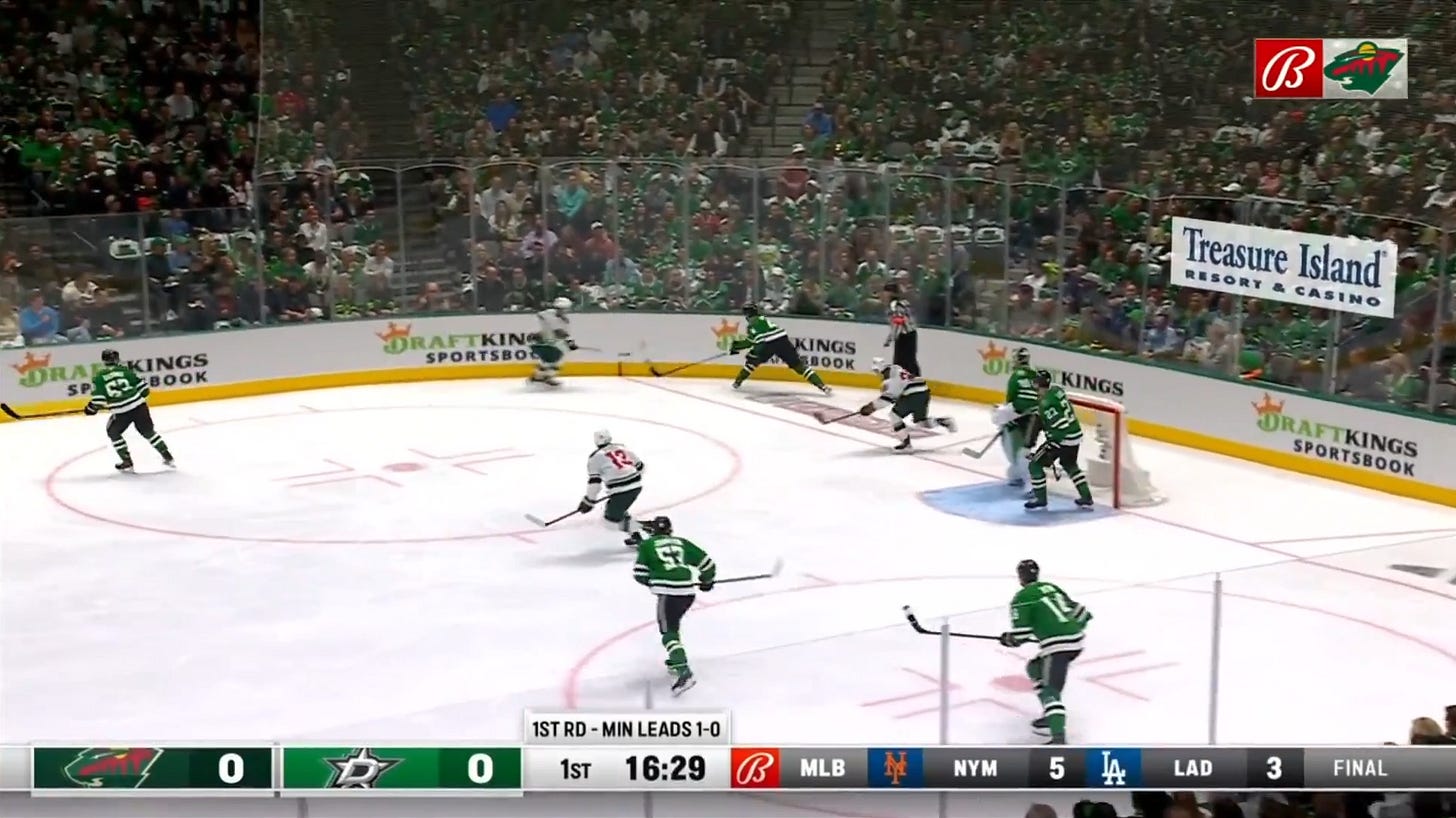

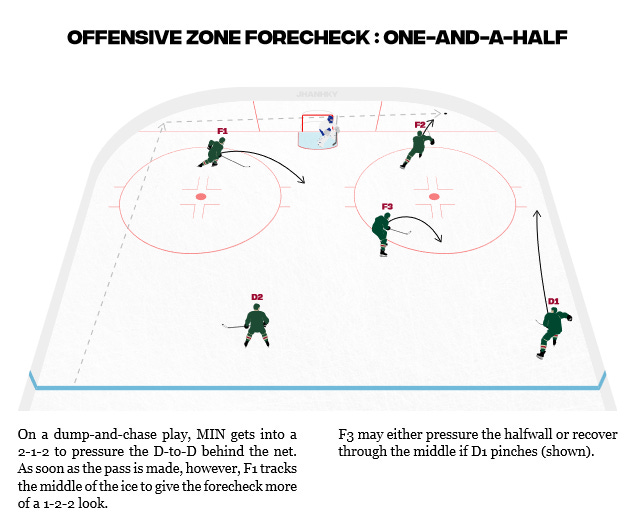


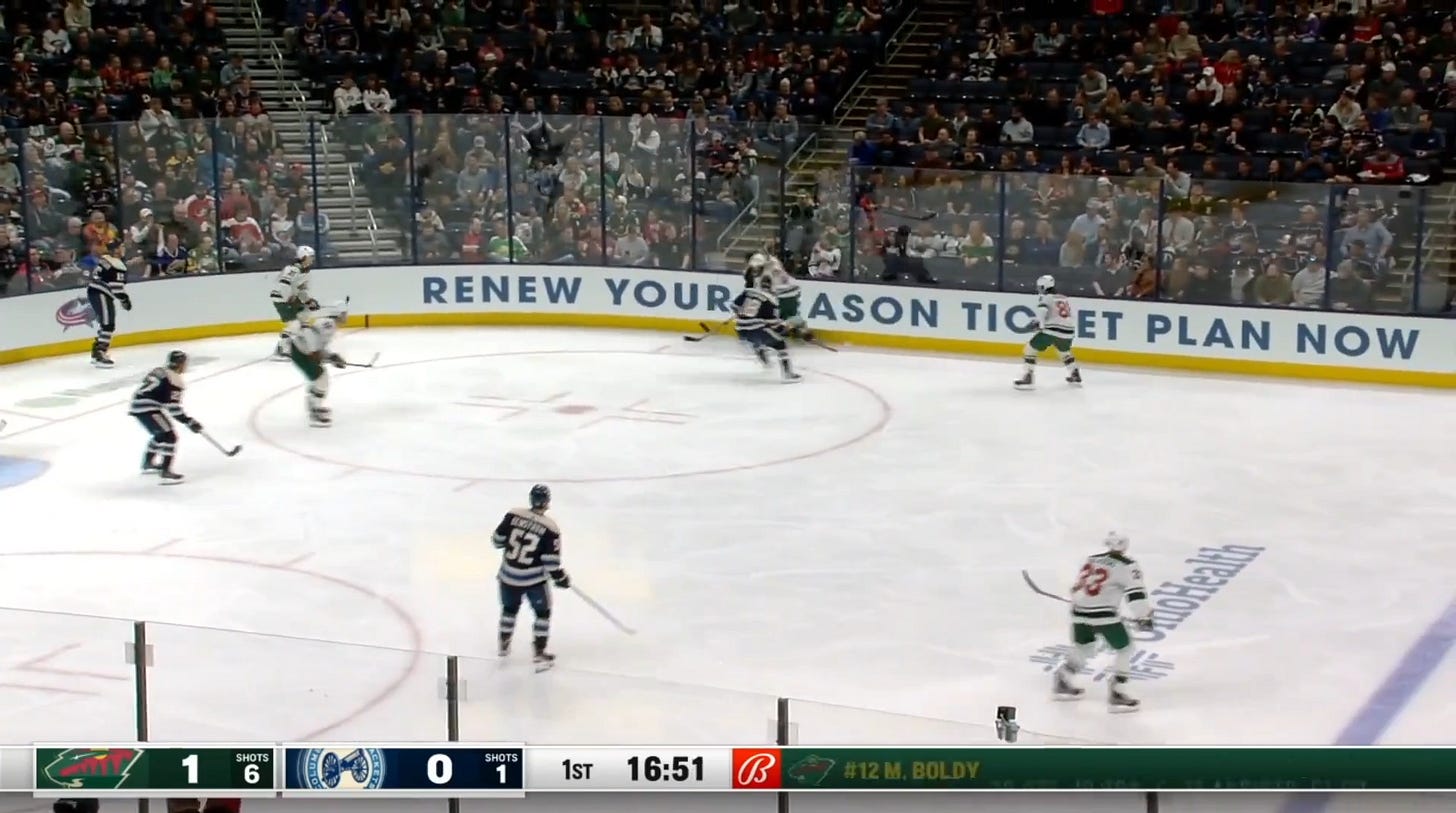






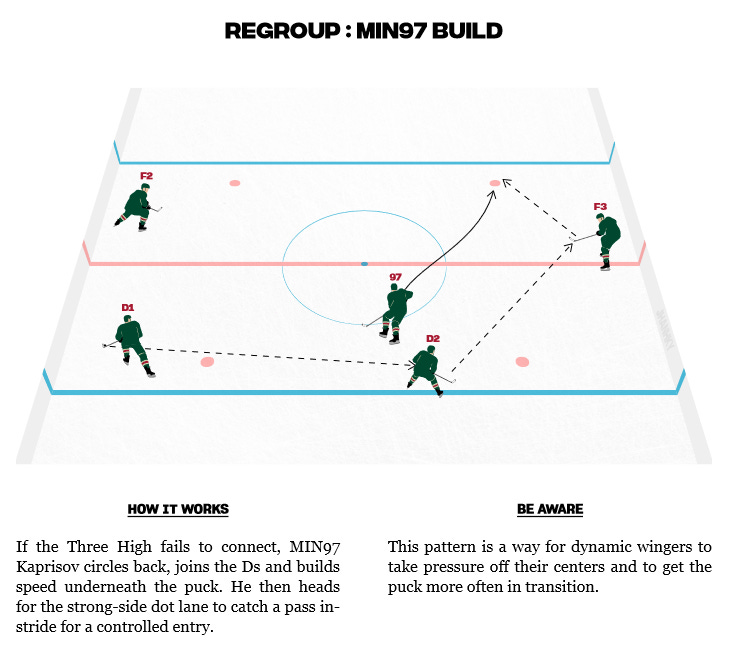
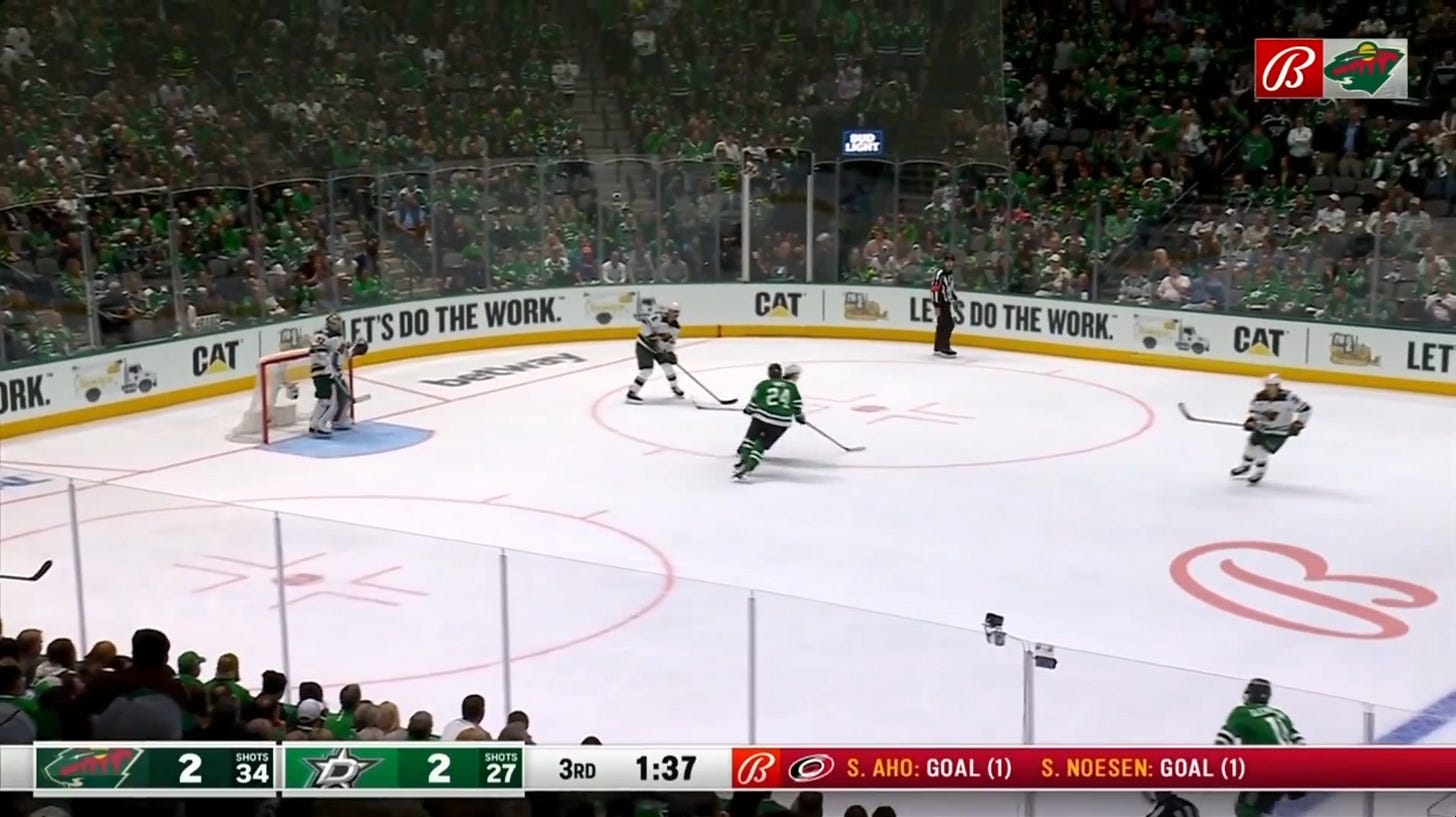








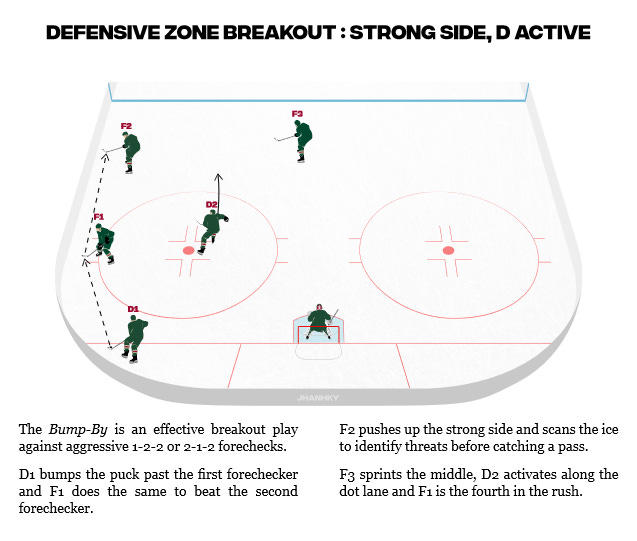

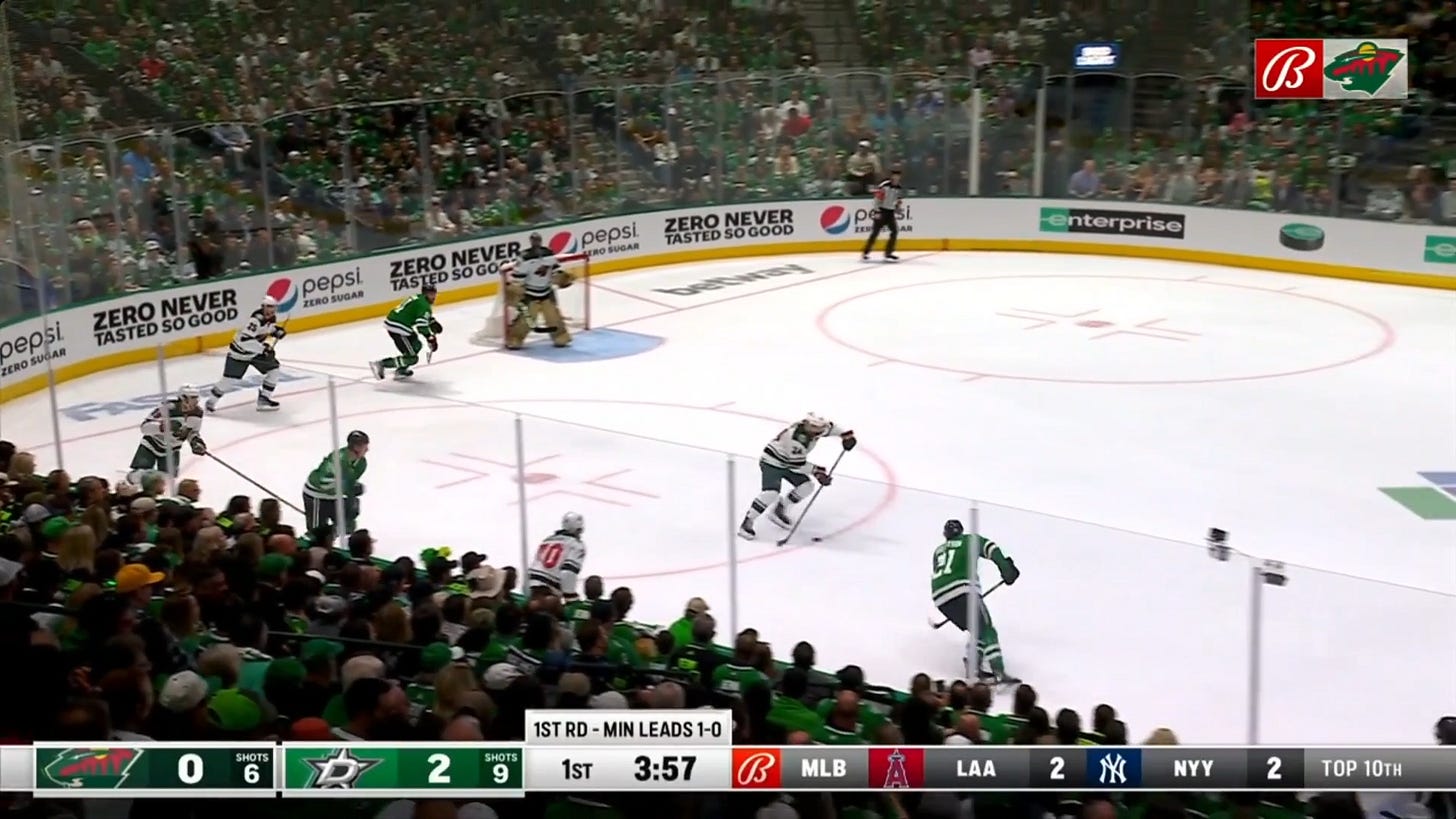

This breakdown is awesome. You should be really proud of your work.